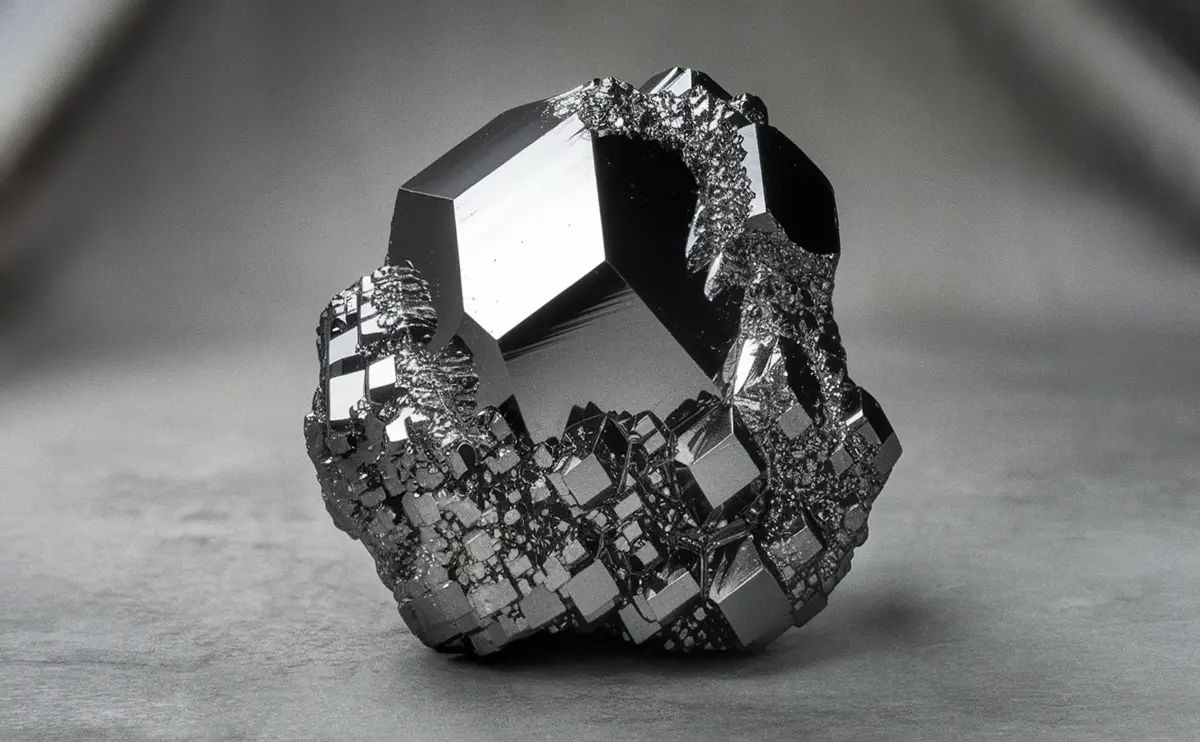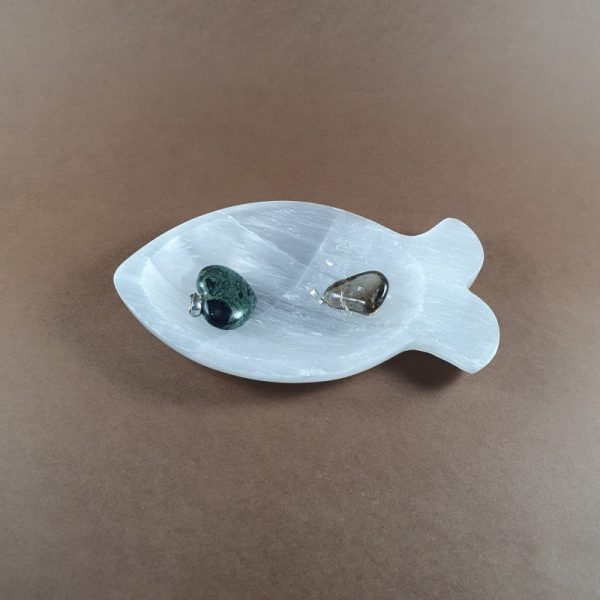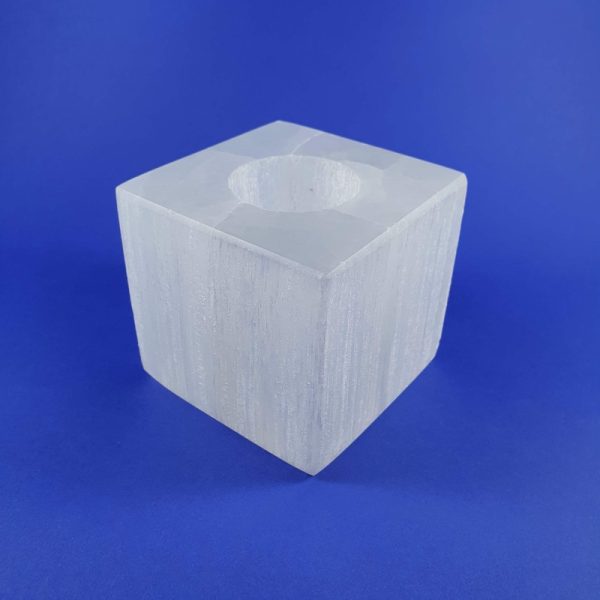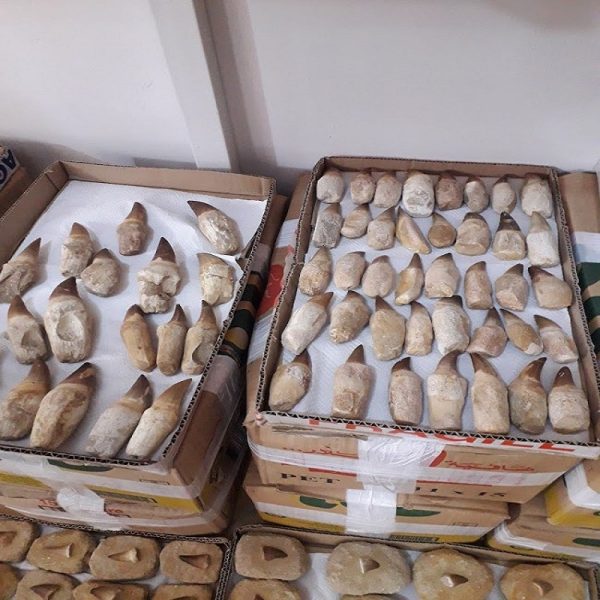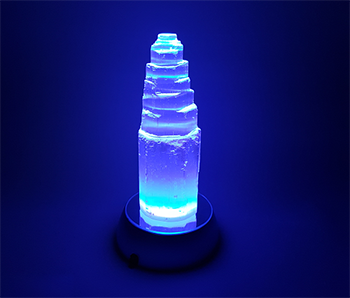Hematite is one of the most abundant and fascinating minerals found on Earth. Known for its metallic luster and deep red streak, this iron oxide mineral has been used for centuries in jewelry, pigments, and even metaphysical healing. In this article, we will explore the properties, uses, and benefits of hematite, along with some frequently asked questions about this stunning mineral.
Table of contents / Jump to
What is Hematite?
Hematite Properties and Characteristics
Uses of Hematite
Where is Hematite Found?
How to Identify Real Hematite
Frequently Asked Questions (FAQ)
What is Hematite?
Hematite is an iron oxide mineral (Fe₂O₃) that naturally occurs in a variety of geological environments. It forms in sedimentary, metamorphic, and igneous rocks and is often found in massive deposits. The mineral’s name is derived from the Greek word haima, meaning “blood,” due to its red-colored powder. Although it appears black, gray, or silver in its polished form, hematite’s streak test reveals its true deep red hue.
Hematite is commonly associated with other iron minerals such as magnetite, goethite, and limonite. It is a significant ore for iron extraction and plays a crucial role in the steel industry. This mineral also forms in both terrestrial and extraterrestrial environments, including Mars, where it has been detected in large deposits by NASA’s rovers.
Hematite Properties and Characteristics
- Chemical Formula: Fe₂O₃
- Hardness: 5.5 – 6.5 on the Mohs scale
- Luster: Metallic to dull
- Streak: Reddish-brown
- Magnetism: Weakly magnetic
- Crystal System: Trigonal
Hematite often forms in botryoidal (grape-like) clusters, tabular crystals, and massive forms. Some of the most famous varieties include specular hematite, which exhibits a shiny, mirror-like surface, and kidney ore, which has a bumpy, rounded appearance.
Uses of Hematite
Hematite has a wide range of applications, both industrial and ornamental:
1. Industrial Uses
Hematite is the primary ore of iron, making it essential in steel production. It is mined in large quantities to extract iron, which is used in construction, automobiles, and machinery. Iron from hematite is a fundamental material for infrastructure and manufacturing industries worldwide.
Hematite is also used in radiation shielding due to its high density. It is sometimes incorporated into concrete to enhance its protective properties, especially in nuclear reactors and medical radiology rooms.
2. Jewelry and Decorative Items
Due to its metallic sheen and striking appearance, hematite is commonly used in beads, rings, pendants, and other accessories. Its affordability and durability make it a popular choice for jewelry lovers. Hematite bracelets and necklaces are often marketed as grounding stones that promote balance and emotional stability.
Unlike magnetic hematite (a synthetic variant), natural hematite does not have strong magnetic properties. Be cautious when purchasing hematite jewelry labeled as magnetic, as it may be an imitation product.
3. Metaphysical and Healing Properties
Many believe that hematite has grounding and protective properties. It is thought to absorb negative energy, improve focus, and enhance stability. Crystal enthusiasts often use hematite in meditation and spiritual practices.
4. Pigments and Art
Hematite has been used as a red pigment for thousands of years. Ancient civilizations, including the Egyptians and early cave painters, utilized its rich red hues in artwork and ceremonial applications. Hematite-based pigments, known as red ochre, were widely used for body painting, pottery, and murals.
Today, hematite continues to be used in artistic applications, particularly in ceramics and paints. Its natural red coloration provides a durable and vibrant hue for various creative endeavors.
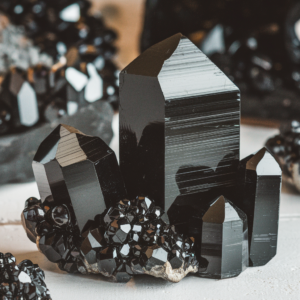
Where is Hematite Found?
Hematite is found worldwide, with significant deposits in:
- Brazil – Home to some of the highest-quality hematite specimens.
- Australia – Major iron ore mines in Western Australia contribute to global steel production.
- United States – Notable deposits in Michigan and Minnesota.
- China, Russia, and Canada – Other key hematite-producing countries.
Some of the world’s largest iron ore mines, such as the Carajás Mine in Brazil and the Hamersley Basin in Australia, extract hematite-rich deposits for industrial use. (Learn more about hematite mining at Geology.com.)
How to Identify Real Hematite
To distinguish genuine hematite from synthetic or imitation versions:
- Streak Test: Scratch the mineral on an unglazed ceramic tile; real hematite leaves a reddish-brown streak.
- Magnetism: True hematite has weak to no magnetism, unlike synthetic hematine, which is often magnetic.
- Weight and Density: Hematite is heavier than most other minerals of similar size.
When purchasing hematite jewelry or specimens, always buy from reputable dealers to ensure authenticity. (Visit Mindat.org for detailed hematite mineral data)
Frequently Asked Questions (FAQ)
1. Is hematite magnetic?
Pure hematite is only weakly magnetic. However, some hematite specimens contain magnetite impurities, making them slightly magnetic.
2. Can hematite be used for healing?
Many crystal enthusiasts believe hematite has grounding and protective properties. It is commonly used in meditation and energy work to promote balance and focus.
3. Is hematite expensive?
Hematite is generally affordable, though high-quality specimens or unique jewelry designs may cost more.
4. How do I clean hematite jewelry?
Use a soft cloth and mild soap with water. Avoid prolonged exposure to water, as hematite may rust over time.
5. Where can I buy real hematite?
You can find genuine hematite in crystal shops, jewelry stores, and online retailers specializing in minerals and gemstones. (Visit Minerals.net for more insights on hematite properties and uses)
Hematite continues to be a fascinating mineral with diverse applications. Whether you’re drawn to it for its industrial importance, aesthetic appeal, or metaphysical benefits, hematite remains a timeless and valuable mineral to explore.

